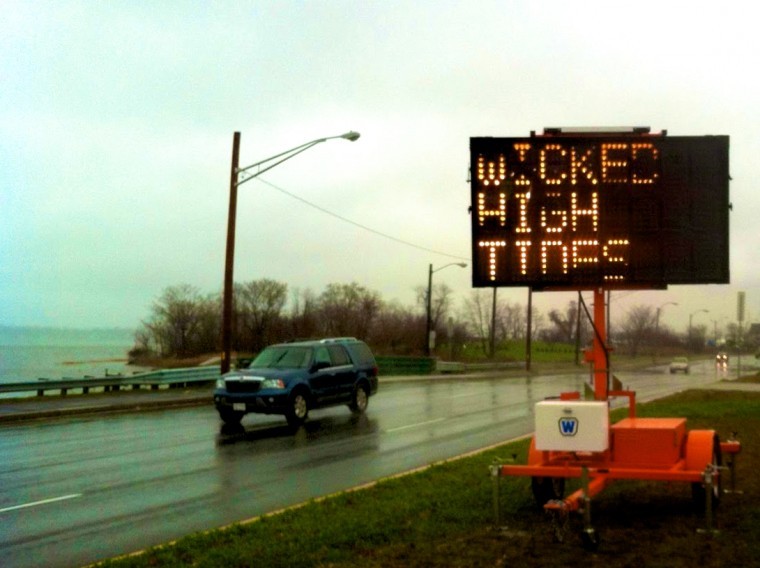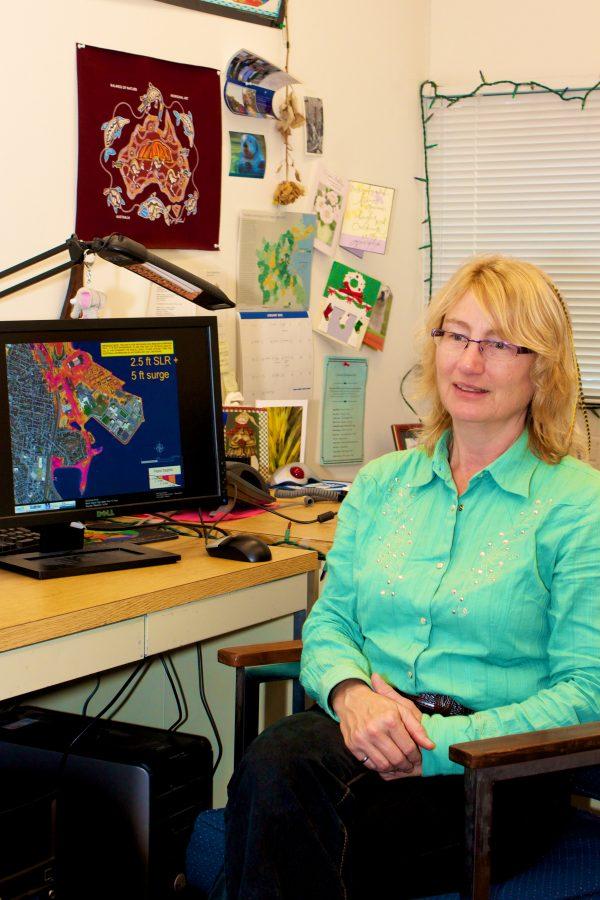Scientists like UMass Boston Assistant Professor of Hydrology Ellen Douglas estimate the sea level will rise between two and five feet within the next 50 to 75 years. This issue has found its way into local headlines because of Mayor Thomas Menino’s proposed waterfront development projects in East Boston, an area that could one day be submerged beneath Boston Harbor. The projected rise in sea level is a major concern of building designers for the UMass Boston campus as well.
“We could never move forward [with the 25-year plan] without considering sea level rise and elevation,” said Holly Sutherland, manager of master plan and construction communications at UMB. She continued, “Each phase of construction is subject to review by the Executive Office of Energy and Environmental Affairs (EEA).”
The review of UMass Boston initial construction projects such as the Integrated Science Building by the EEA determined that although the campus is located on the waterfront, only a small portion is below the 100-year floodplain, that is, the amount of land that is likely to become covered by water within the next 100 years. The 25-year plan clearly prioritizes development of land at least five feet above that level.
The projected rise in sea level has been the cause of some special design considerations. For example, the Integrated Science Complex will house all its utilities on the sixth floor.
According to Professor Douglas, the campus’s elevation would keep most of the buildings dry even under conservative worst-case scenario estimates: “In ‘the perfect storm’ scenario we factor in a two-and-a-half foot rise in sea level, combined with annual high tide (also known as ‘wicked high tide’) and a powerful storm surge, comparable to the surge that accompanied the blizzard of ‘78. Under those conditions, Morrissey Boulevard would be under many feet of water, as would the Expo Center. The inner campus, however, would remain above the flood line.”
The predictive model used to generate that worst-case scenario does not account for a sea level rise of five feet because “we didn’t want to scare anyone,” said Douglas; “A two-foot rise in sea level is much more certain. It is not a question of if it will rise, but how quickly.”
The threat of flooding is generating many design solutions for more at-risk development sites in Boston. Some proposed solutions include engineered barriers such as sea walls, landscape flood mitigation, which uses naturally occurring or engineered landscape features such as mounds or vegetation to block or redirect water flow, and flood-resilient building designs, which involve engineering buildings so they aren’t affected by flooding.
Douglas gave an example of a flood resilient design strategy that allows flood water to enter a building but is also designed to let the water recede with the tide. While such drastic measures may not be built into any UMass Boston’s new buildings, flooding will be a concern, and a potentially serious problem for the campus.
“The effects of the current levels of CO2 in the atmosphere can only be mitigated; they cannot be reversed,” said Douglas. “The climate is changing and the university is going to have to adapt to those changes.”






















































